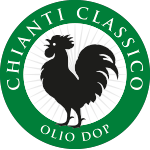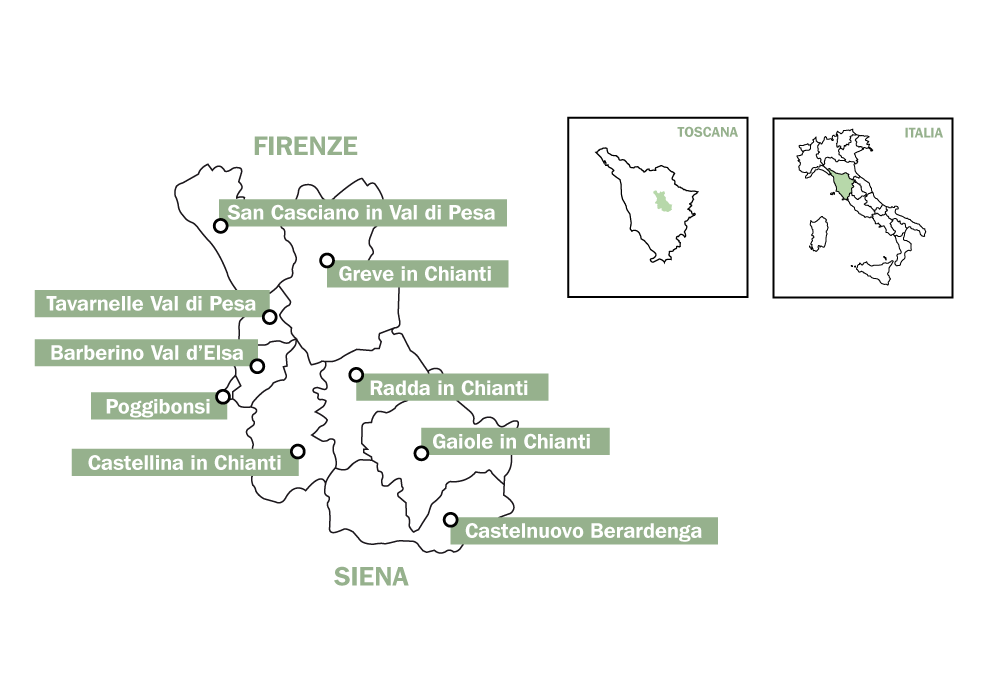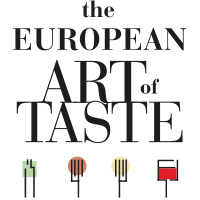THE CONSORTIUM
OLIO CHIANTI CLASSICO DOP

Producing extra-virgin olive oil, and DOP (PDO) olive oil in particular, requires a huge commitment and technical consistency. Tests and trials are fundamental for making sure that the Olio Chianti Classico DOP always contains the many components (vitamins, polyphenols, essential compounds, etc.) that ensure its uniqueness.
This is precisely the mission of the Consorzio Olio DOP Chianti Classico, an inspection body and protection association formed spontaneously in 1975, along the lines of the organisation set up to protect the Chianti wines (Consorzio Vino Chianti Classico), which has the task of safeguarding and promoting this DOP (PDO) oil since its establishment in 2001, according to the same quality criteria which, for thirty years now, producers are required to meet if they wish to receive Chianti Classico DOP (PDO) status. Therefore, the Protection Association supports producers in their ongoing commitment to create a high quality product that can help us keep a healthy lifestyle, while maintaining its “classic” aroma and flavour.
Thanks to its typical fruitiness, with hints of raw artichokes and fresh herbs, and pleasantly piquant aftertaste, Chianti Classico DOP (PDO) oil is the fruit and expression of the natural environment in which it is produced – the Chianti region – in the heart of Tuscany. Aromas and flavours are closely linked to the olive cultivars used and to the environment in which the olive trees grow, and consumers can find them in this “precious” olive oil, whose quality is guaranteed by the DOP (PDO) label.
The activity of the Consorzio Olio DOP Chianti Classico, however, is not limited to the olive groves and oil presses but also includes the promotion of the extra-virgin oil with the Black Rooster logo through scientific and dissemination events worldwide. The Protection Association counts 250 members operating in the Chianti Classico region, which includes the communes of Castellina in Chianti, Gaiole in Chianti, Greve in Chianti, Radda in Chianti and parts of those of Barberino Val d’Elsa, Castelnuovo Berardenga, Poggibonsi, San Casciano Val di Pesa and Tavarnelle Val di Pesa.
Production area: history and tradition
The Chianti region, where Chianti Classico oil and wines have been made for centuries, is a part of Tuscany, in central Italy, bordered to the north by the environs of Florence, to the east by the Chianti Mountains, to the south by the city of Siena and to the west by the Pesa and Elsa Valleys.
A land of ancient traditions, civilised first by the Etruscans – of which traces have been found relating specifically to the world of winemaking – and then by the Romans. In the Middle Ages, the Chianti region was the battleground in the struggle between Florence and Siena for the control of Tuscany, a period in which many villages and monasteries arose and castles and fortresses were built, later converted into villas and country houses when more peaceful times came along. This was also the time in which extensive areas of chestnut and oak woodland were transformed into vineyards and olive groves, which gradually acquired increasing economic importance and international renown.
The first document associating the name Chianti with the local wine dates back to 1398. Chianti wine was regularly exported to England already in the 17th century and, from the 18th century, in the wake of the agricultural rebirth of Tuscany, sharecropping became widespread in the Chianti region and the landscape began to be modelled by this form of farming. It was then that most of the still existing farmhouses were built and the large estates formed.
From the end of the 19th century to the eve of the third millennium, the fame of Chianti Classico oil and wines has spread throughout the world, bringing prosperity and well-being to the entire region.



